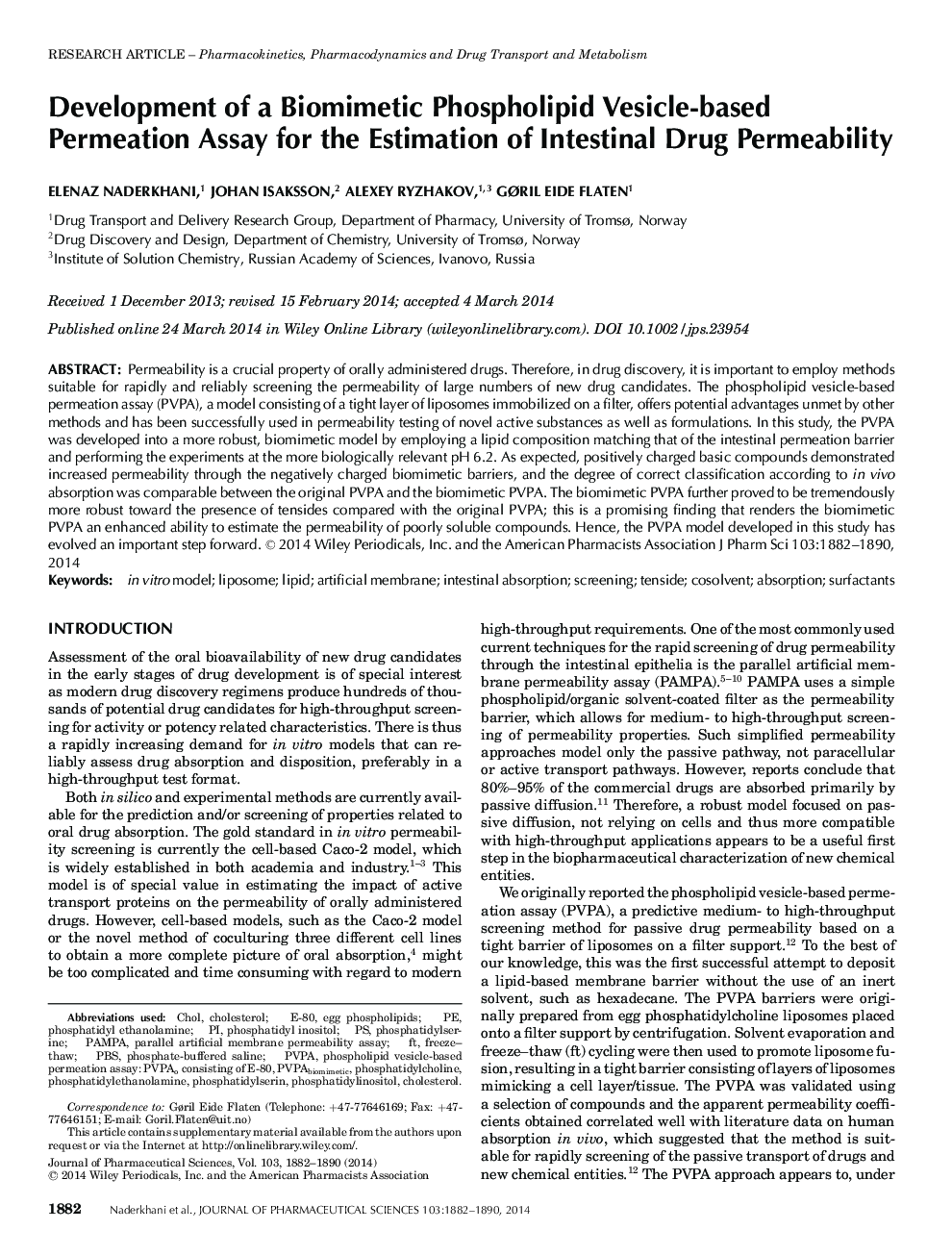| Article ID | Journal | Published Year | Pages | File Type |
|---|---|---|---|---|
| 10162502 | Journal of Pharmaceutical Sciences | 2014 | 9 Pages |
Abstract
Permeability is a crucial property of orally administered drugs. Therefore, in drug discovery, it is important to employ methods suitable for rapidly and reliably screening the permeability of large numbers of new drug candidates. The phospholipid vesicle-based permeation assay (PVPA), a model consisting of a tight layer of liposomes immobilized on a filter, offers potential advantages unmet by other methods and has been successfully used in permeability testing of novel active substances as well as formulations. In this study, the PVPA was developed into a more robust, biomimetic model by employing a lipid composition matching that of the intestinal permeation barrier and performing the experiments at the more biologically relevant pHÂ 6.2. As expected, positively charged basic compounds demonstrated increased permeability through the negatively charged biomimetic barriers, and the degree of correct classification according to in vivo absorption was comparable between the original PVPA and the biomimetic PVPA. The biomimetic PVPA further proved to be tremendously more robust toward the presence of tensides compared with the original PVPA; this is a promising finding that renders the biomimetic PVPA an enhanced ability to estimate the permeability of poorly soluble compounds. Hence, the PVPA model developed in this study has evolved an important step forward. © 2014 Wiley Periodicals, Inc. and the American Pharmacists Association J Pharm Sci 103:1882-1890, 2014
Keywords
Related Topics
Health Sciences
Pharmacology, Toxicology and Pharmaceutical Science
Drug Discovery
Authors
Elenaz Naderkhani, Johan Isaksson, Alexey Ryzhakov, Gøril Eide Flaten,
